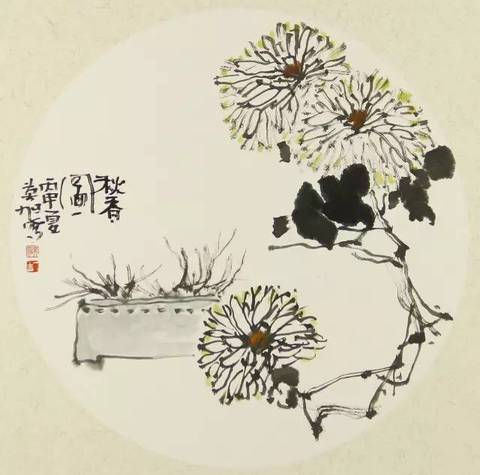The Link between Chinese Calligraphy and Chinese Painting
- King Liox
- 2017年3月1日
- 讀畢需時 2 分鐘

Chinese painting is strongly associated with calligraphy. Chinese paintings generally can be divided into two styles, Gongbi (工笔) or meticulous-style, also described as court-style painting and Xieyi (写意) or freehand-style. In the meticulous-style, smaller and thinner brushstrokes are used to draw lines of every details in a particular painting. Bigger and thicker brushstrokes are used to express and simplify shapes in a freehand-style painting, only important details are preserved. Painting with the meticulous-style needs patience and steady hands; while the painting with freehand-style requires Daqi (大气). There is no words to translate Daqi, the nearest description in English is probably a spiritual and imposing manner. Although both styles are distinctly executed, the fact that they are derived from calligraphy practices makes them deeply connected.

Many times viewers who are deeply interested in admiring Chinese paintings were advised to read paintings rather than looking at them. The freehand-style Xieyi (写意) is combined with two Chinese characters Xie (写) which means ‘write’ and Yi (意) which carry the meaning ‘state’. Words which build the term ‘freehand-style’ indicates that Chinese painting were not painted by drawing but by writing. Traditional bamboo ink paintings have the most obvious calligraphy strokes. The ‘perpendicular-down’ strokes are used to ‘write’ branches of the bamboo, ‘dots’ strokes to connect the joints, ‘left-falling’ and ‘right-falling’ strokes to express the leaves. Plus, the properties of bamboo that is strong and flexible make it the most suitable to practice strokes.
Again, the link between Chinese calligraphy and painting is underlined. Traditional Chinese painters aims to capture not only the appearance of subject but its inner essence or spiritual energy as well. Thus unlike Western paintings which focuses on capturing light, mood and realisms, Chinese ink paintings emphases on expression of individualism. Instead of using oil and pigments to model light and shadow, Chinese traditional paintings relies on lines to record the indelible mark of the inked brush. Chinese ink paintings seeks to capture the quintessential rhythms of nature through calligraphic brushworks infused with the artists’ sense of life energy. Therefore Chinese ink paintings goes beyond mere representation of objects.

















留言